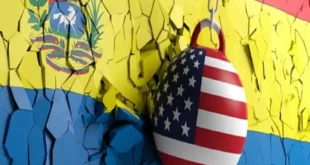Israel might be planning a deeper penetration into southern Syria, aimed at pushing Iranian militias further from its border, al-Araby al-Jadeed says.
Recent Israeli strikes, described as “unprecedented,” have disabled portions of the radar and early warning systems in southern Syria. These actions come amid heightened military tensions in the Middle East. Local networks such as Suwayda 24 reported that Israeli drones targeted several radar installations and air defence systems in the provinces of Daraa and Suweida, taking five radars offline. Key locations targeted included two battalions near Izra and Muhajjah in Daraa’s eastern countryside, Izra Agricultural Airport, Al-Tha’la Military Airport in Suweida’s western countryside, and Khalkhalah Military Airport.
The strikes at Al-Tha’la Airport involved two missiles, one hitting the eastern gate and the other severely damaging the early warning system at the radar battalion in the Tal Kharouf area, which is part of the air defense network. The air defense battalion linked to the 79th Brigade in southern Syria, located between Al-Sanamayn and Al-Qaniya, was also hit. Eyewitnesses reported intense explosions and thick smoke rising from both Al-Tha’la Airport and the radar installation at Tal Kharouf.
Military sources in southern Syria indicated that this level of targeting, involving Israeli drones, was unprecedented both in scope and in the number of sites hit. Despite attempts by regime forces to fend off the drones with machine guns, the strikes were highly effective, possibly signaling Israel’s intention to dismantle Syria’s radar and early warning systems. This would likely serve to mitigate the threat posed to Israeli aircraft, especially given the escalating tensions across the region, particularly in Lebanon.
Escalation in Southern Syria
Israel has recently intensified its targeting of Hezbollah and Iranian militia positions, particularly in southern Syria. Daraa Governorate, bordering the occupied Golan Heights, has seen increased activity from Iranian militias, which have launched rockets towards Israel since October 7, when the latest Gaza conflict began. These rockets, however, have mostly landed in uninhabited areas of the Golan. Suweida, adjacent to Daraa, has historically experienced fewer Israeli strikes, but Al-Tha’la Airport, a regime military stronghold in the area, is increasingly becoming a target due to its proximity to Daraa and its use by Iranian militias.
Israeli Intentions in Southern Syria
Colonel Mustafa Al-Bakour, a defector from the Syrian regime, suggested in an interview with Al-Araby Al-Jadeed that Israel might be planning a deeper penetration into southern Syria, aimed at pushing Iranian militias further from its borders. He pointed to Khalkhala Airport, which Israel recently struck, as a key base for Iranian forces, serving as a launching point for operations in Suweida and the Hauran Plain. The airport is equipped with radar and other military infrastructure belonging to these militias, making it a prime target for Israeli strikes.
Al-Bakour also noted that Al-Tha’la Airport has become a hub for Iranian militias, with drone assembly workshops and training facilities, further incentivizing Israeli attacks to prevent these sites from monitoring Israeli aircraft.
The Risk of a Larger Israeli Invasion?
Major Youssef Hammoud, another regime defector, explained that Israeli aircraft operating in southern Lebanon are increasingly entering areas covered by Syrian radar, which requires Israel to neutralize the detection systems to avoid threats. Hammoud speculated that Israel could escalate its operations in southern Syria, targeting additional airports, warning systems, and radar stations if it seeks to expand its military actions.
While the possibility of a full-scale Israeli ground invasion remains uncertain, Hammoud did not dismiss the likelihood of limited incursions into Syrian territory. Such moves could be part of a broader strategy if Israel aims to advance its operations in southern Lebanon, possibly pushing toward the Litani River.
The current strikes, therefore, may represent a prelude to further escalation, as Israel seeks to neutralize Syrian radar capabilities and weaken Iranian influence along its borders.
 Eurasia Press & News
Eurasia Press & News


